Ozan Kabak is well known to fans of both the Premier League and Bundesliga, given his spells with Stuttgart, Schalke, and Liverpool. Kabak is a highly rated prospect, still at just 21 years of age and already with a wide dearth of experience at the peak of European football.
Coming through the Galatasaray youth academy, Kabak seemed destined for great things when in January of 2019 Stuttgart paid £9.9 million for his services, only to have Schalke take him off their hands seven months later for £13.5 million. Kabak was able to escape the mess that unfurled at Schalke halfway through last season, coming over to the Premier League as Liverpool desperately looked to cover their shortage at the centre-back position.
Although he initially struggled to adapt to a new league and team, Kabak ended up playing significant minutes for the reds, but he wasn’t convincing enough in his position for Liverpool to make the loan signing permanent. Since his loan finished, Kabak was linked with a number of Premier League sides, before making another loan move, this time to Norwich City.
This tactical analysis and scout report will provide an in-depth analysis of Kabak’s abilities, whilst looking at the tactics that best suit a centre-back of his skill level.
Passing range
Kabak was used as a left-sided centre-back at Liverpool. Whilst he is right-footed, this showed a confidence in his ability with his weaker foot. He had had experience of playing in this position before, but equally was often used as a right-sided centre-back. This didn’t particularly inhibit his passing game at all, and he showed he could play his passes with his left foot, but any expansive balls played forward, or passes under severe pressure, were often played with his preferred foot.
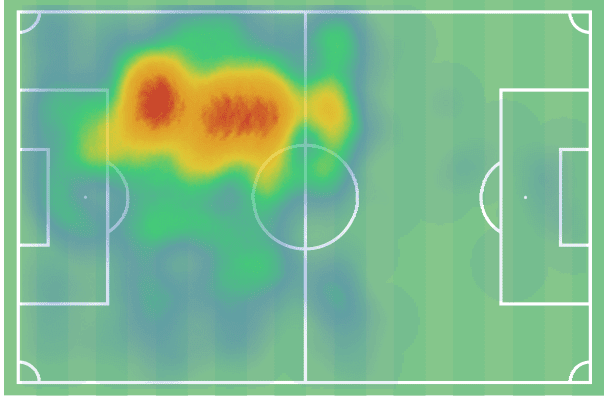
Kabak didn’t show up as a particularly progressive defender when measured against his centre-back peers from last season’s data. Whilst he actually showed some flashes of dribbling ability to drive forward on attacking transition, taking the ball past one or two opponents before finding a pass option, this wasn’t a common occurrence, and it’s not surprising to see him ranking well below the league average for progressive runs per 90. Interestingly, he does rank below the league average for progressive passes per 90 too, however, if we look along the graph we can see him measuring an equal volume per 90 to Joel Matip. So, whilst his 6.432 progressive passes per 90 isn’t stunning by any means, it isn’t a cause for concern.
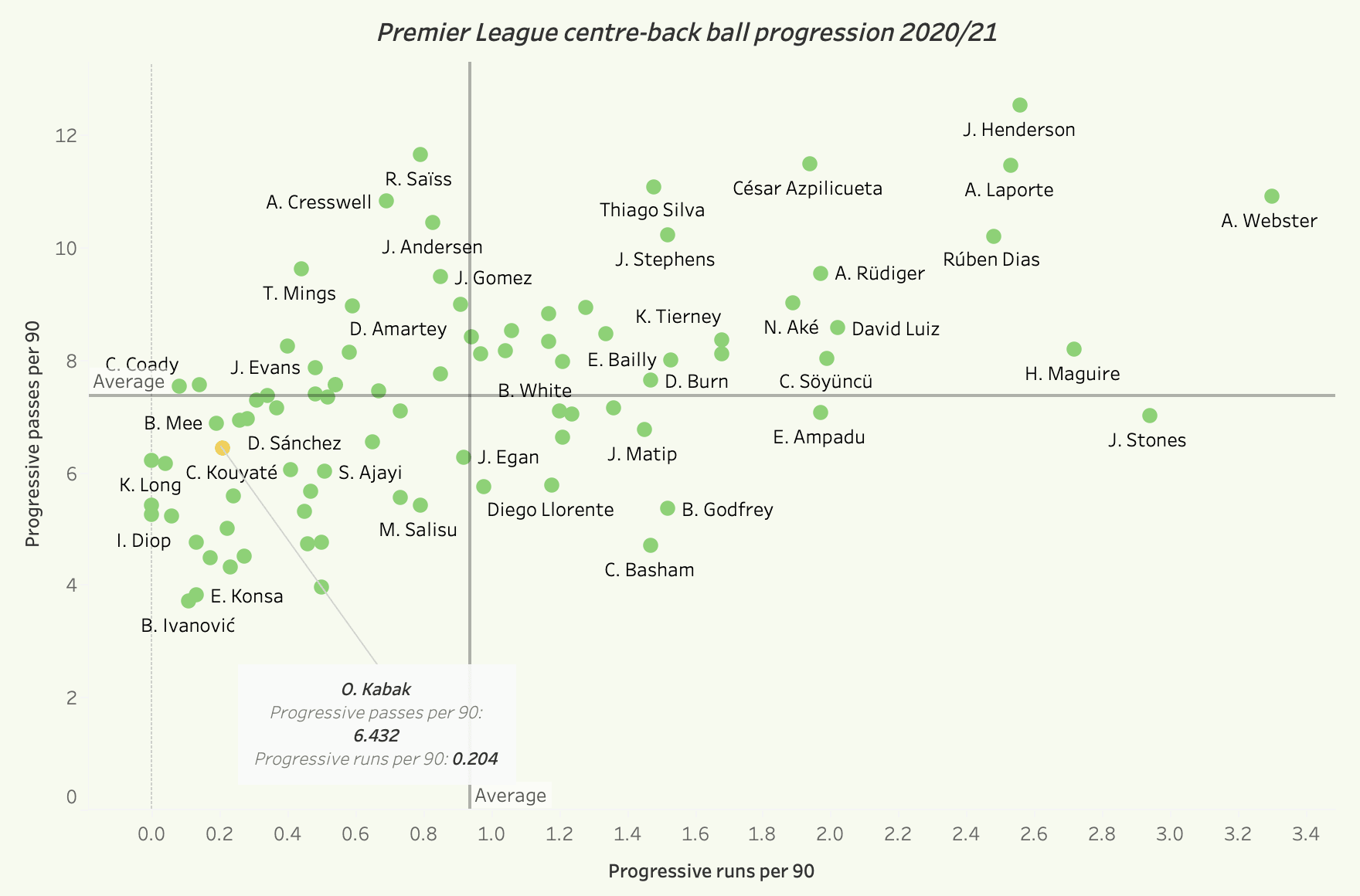
Kabak wouldn’t frequently break lines when in possession. If he did play past the first line of press, it would most likely come as he himself was being pressed, where a teammate had given him an angle beyond this pressure. We can see an example of this below against Leeds, where he gives the ball before pushing forward himself to get back in possession beyond the press.
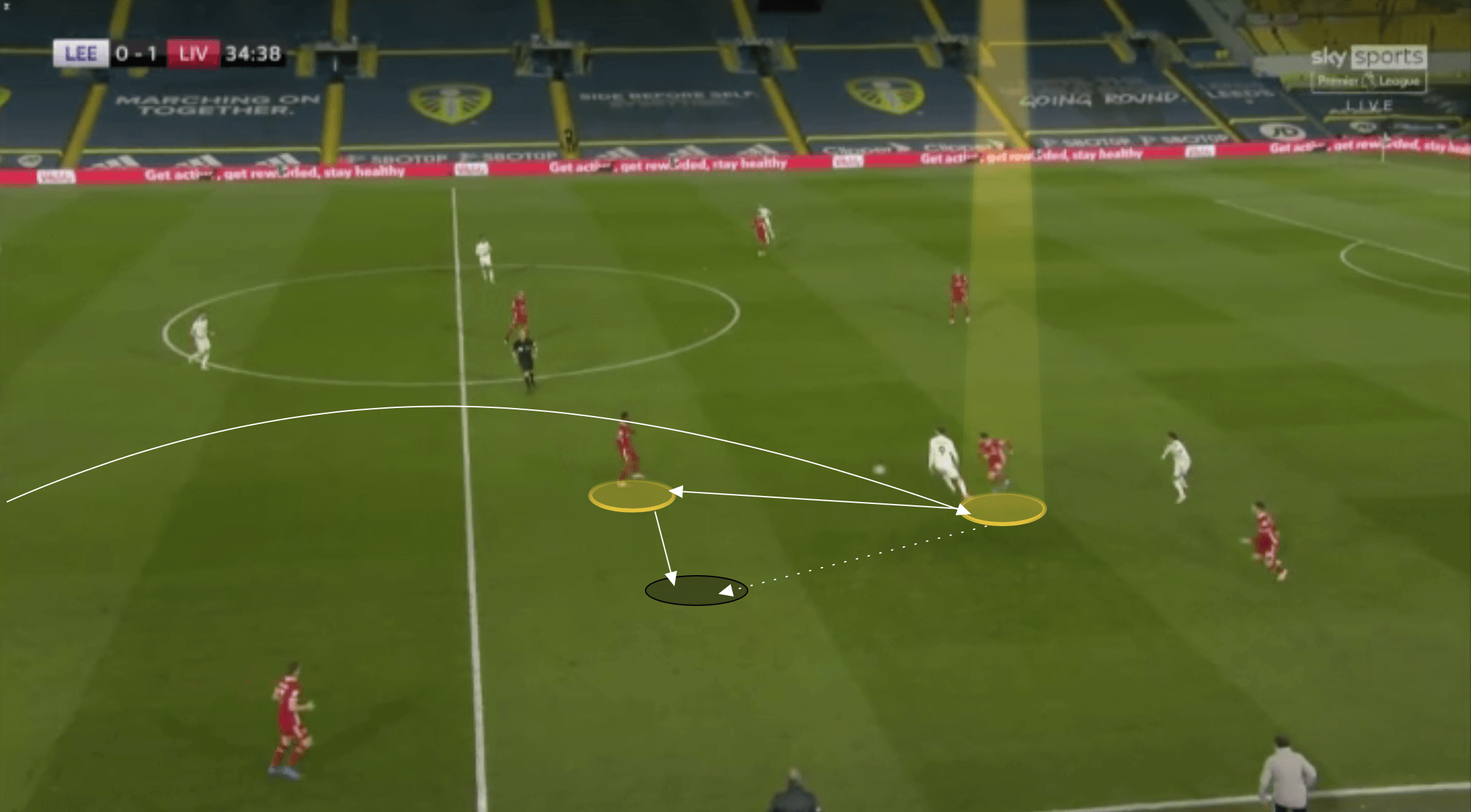
However, Kabak is fond of a longer ball forward, specifically a cross-field diagonal long pass. He hits these with quality technique, good accuracy, and a weight of pass that makes it difficult for defenders to get across and intercept in time. Kabak is able to hit direct passes and pick out players even heavily covered by defenders. This type of pass has clear advantages and benefits, but it should be noted that Kabak may pass up on making central progressive passes in favour of playing one of these diagonal balls. The image below shows an example of this.
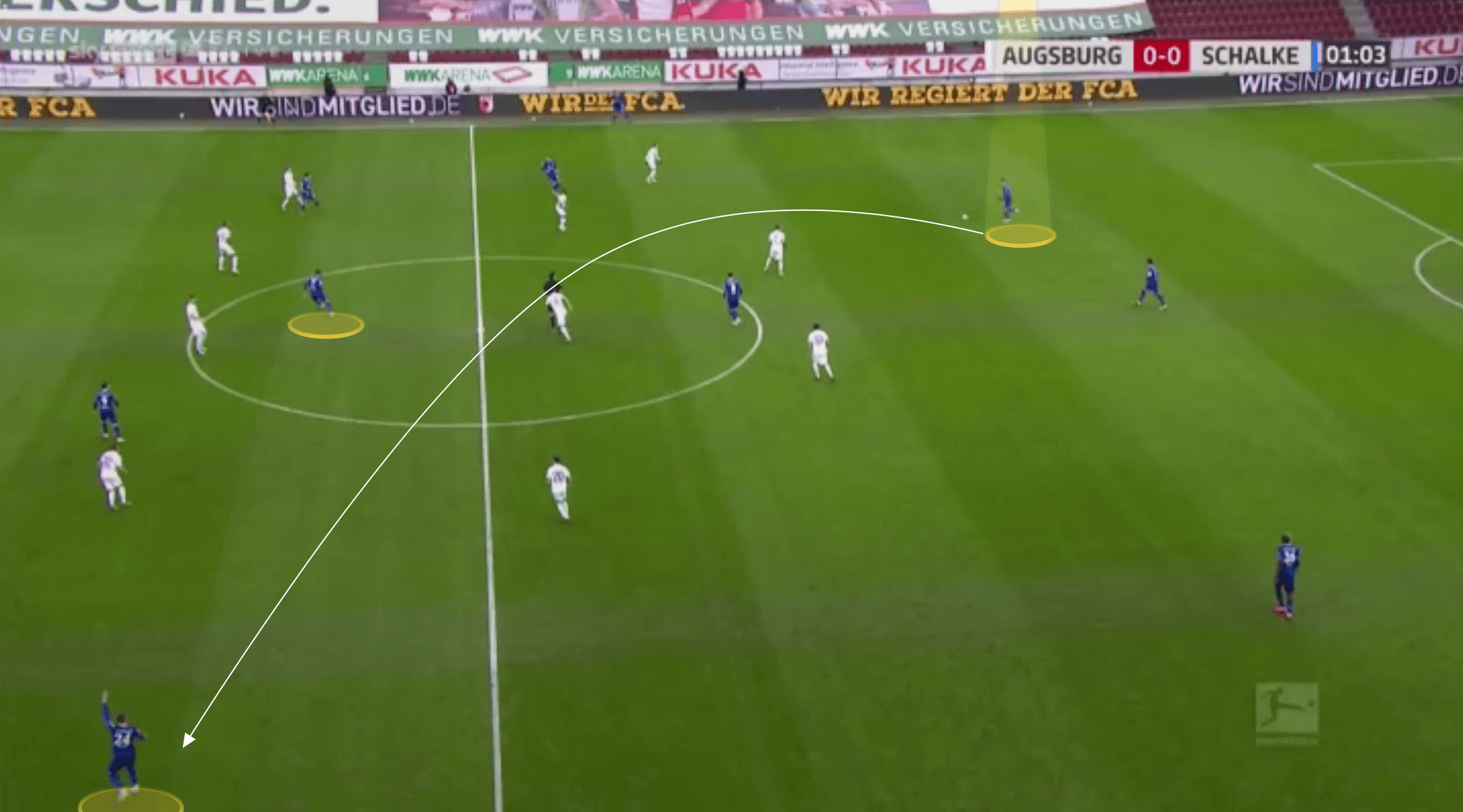
Kabak is very quick to play forward or specifically hit one of these longer passes on attacking transition. Kabak will make an interception or tackle and will already have seen the pass option before making the challenge. As a result, he doesn’t need to look up or set himself before playing this pass, and he can launch a counter-attack quickly as a result.
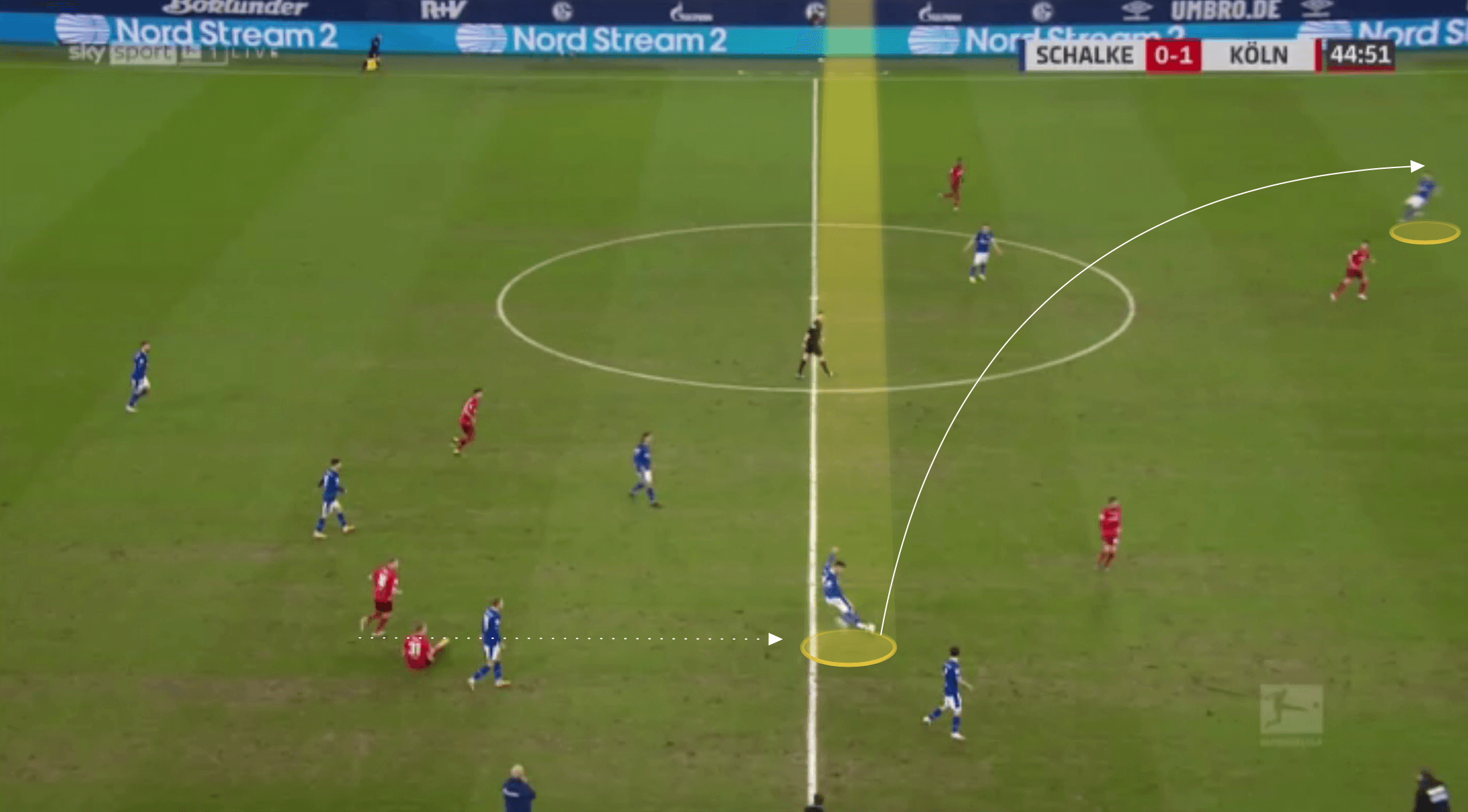
Defensive performance and positioning
Kabak’s defensive data doesn’t stand out either. Firstly, aerially, he was involved in an above-average volume of aerial duels per 90 last season, with 5.19 however, his 49.83% win percentage is less than impressive, with it firmly ranking well below the league average.
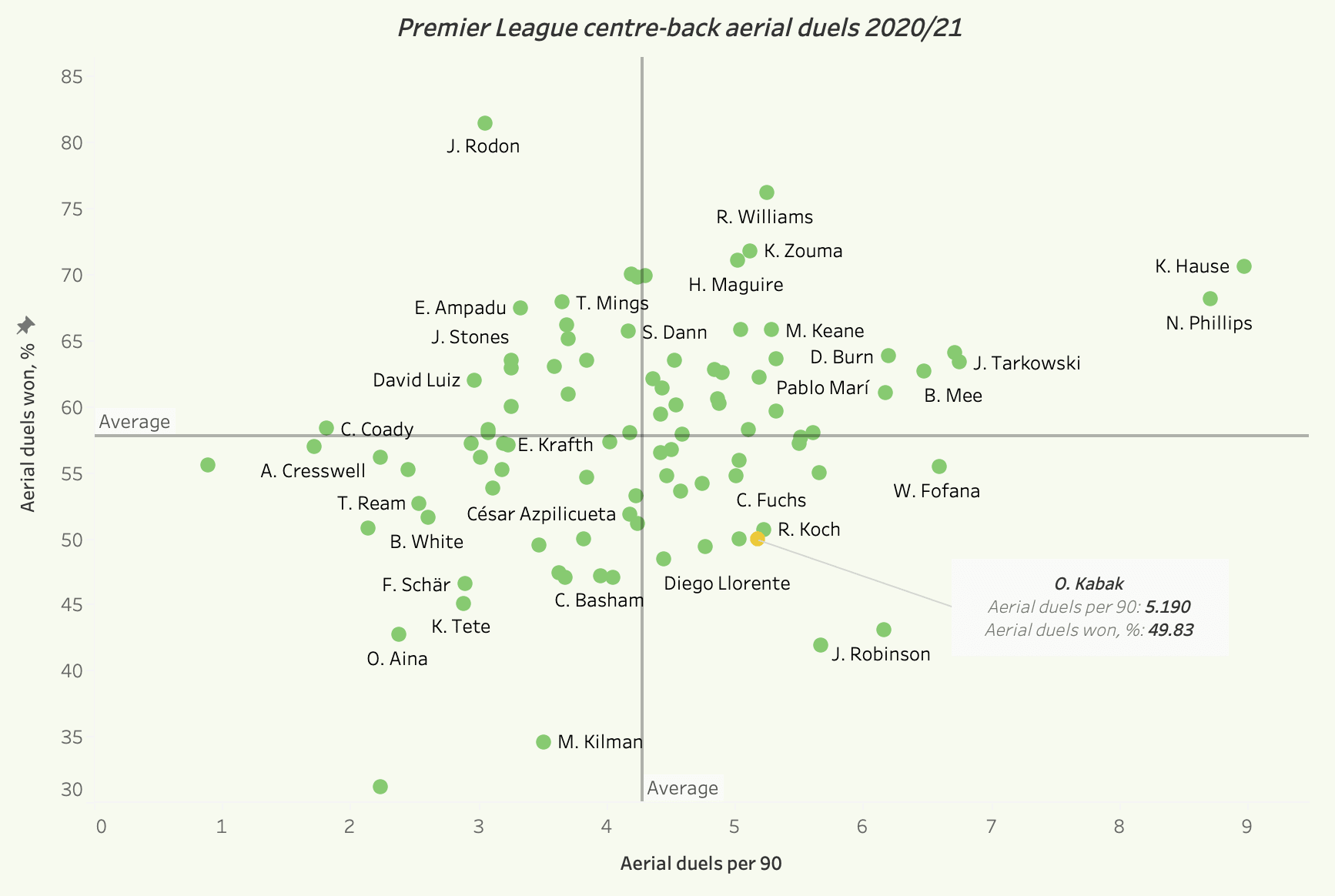
With ground duels he fairs slightly better, again performing below the league average for win percentage, but only minimally so. His 6.238 defensive duels per 90 was above the league average, however. Interestingly, if we look at his ability to make interceptions, his 5.31 padj. Interceptions (represented by the plot size) doesn’t look overly impressive when we look at it in context with many of his centre-back peers.
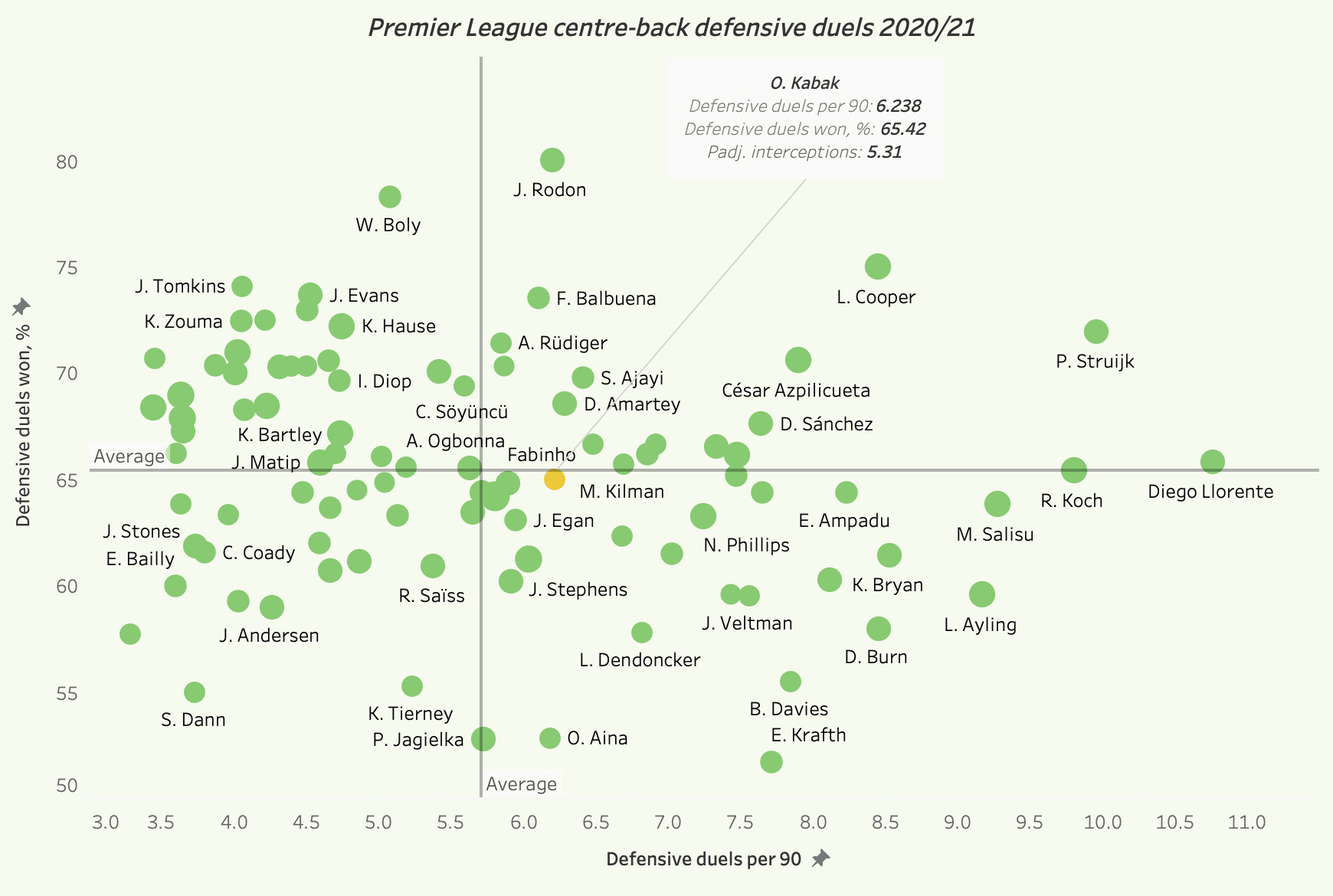
If we look at some in-game examples of Kabak’s defending we can see that there are some clear strengths, and development areas, not highlighted in the data.
When defending in a 1v1 duel, where the ball-carrier is driving forwards, Kabak consistently takes good defensive positioning. He gets side-one and low down, showing the opponent away from the centre of the pitch and as they dribble forwards he closes their angle down to reduce their options.
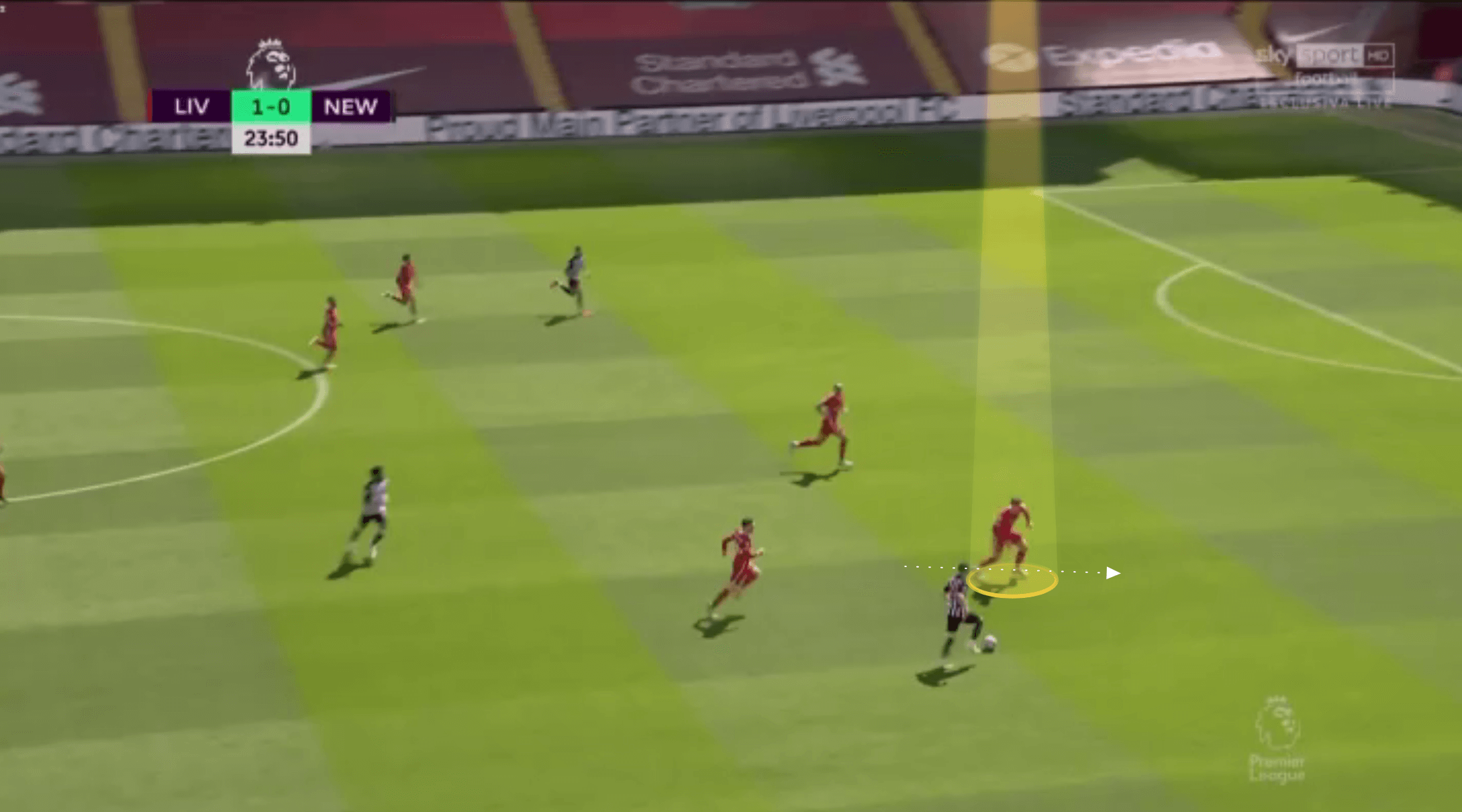
He keeps a good distance from the ball carrier, and he possesses a relatively good recovery pace which allows him to keep up with most quick attackers.
As the dribbler progresses the ball, Kabak allows himself to get touch-tight with the player and can be very physical with them. He will put his hands on the player, pushing them off balance, and just about toes the line between what is within the laws of the game and what isn’t. He has a lean build but has moderate strength and can push an attacker off balance enough where he can step in to win the ball.
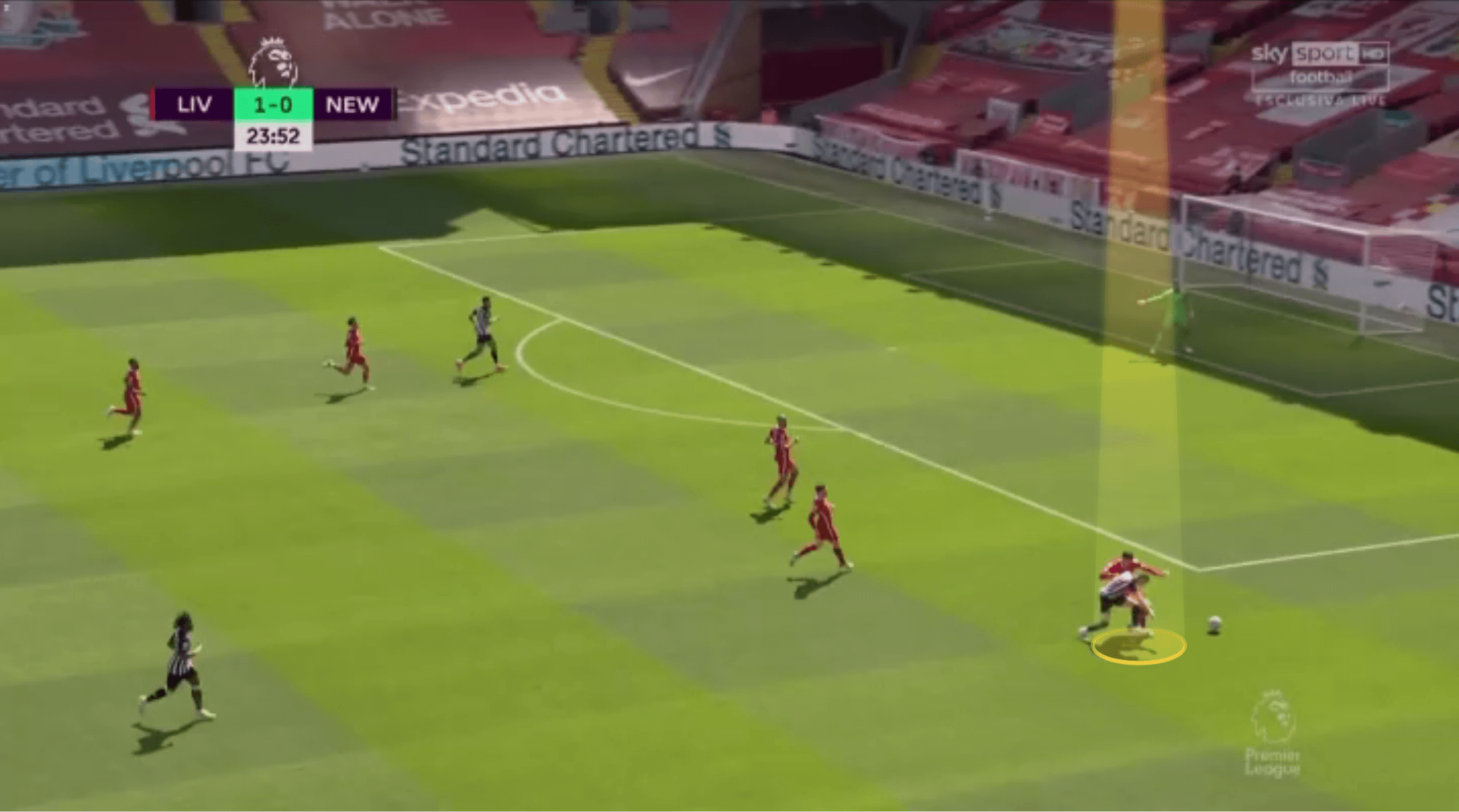
He has a strong belief in his ability to time tackles when recovering in this kind of situation, and for the most part, he shows the timing to back this confidence up. He can make some questionable decisions, lunging in from a dangerous angle, like in the image shown below, but nevertheless, in this example, he was still able to come away with the ball without giving away the foul. When moving towards his own goal and looking to make a tackle, this is a recurring theme in Kabak’s defensive work.
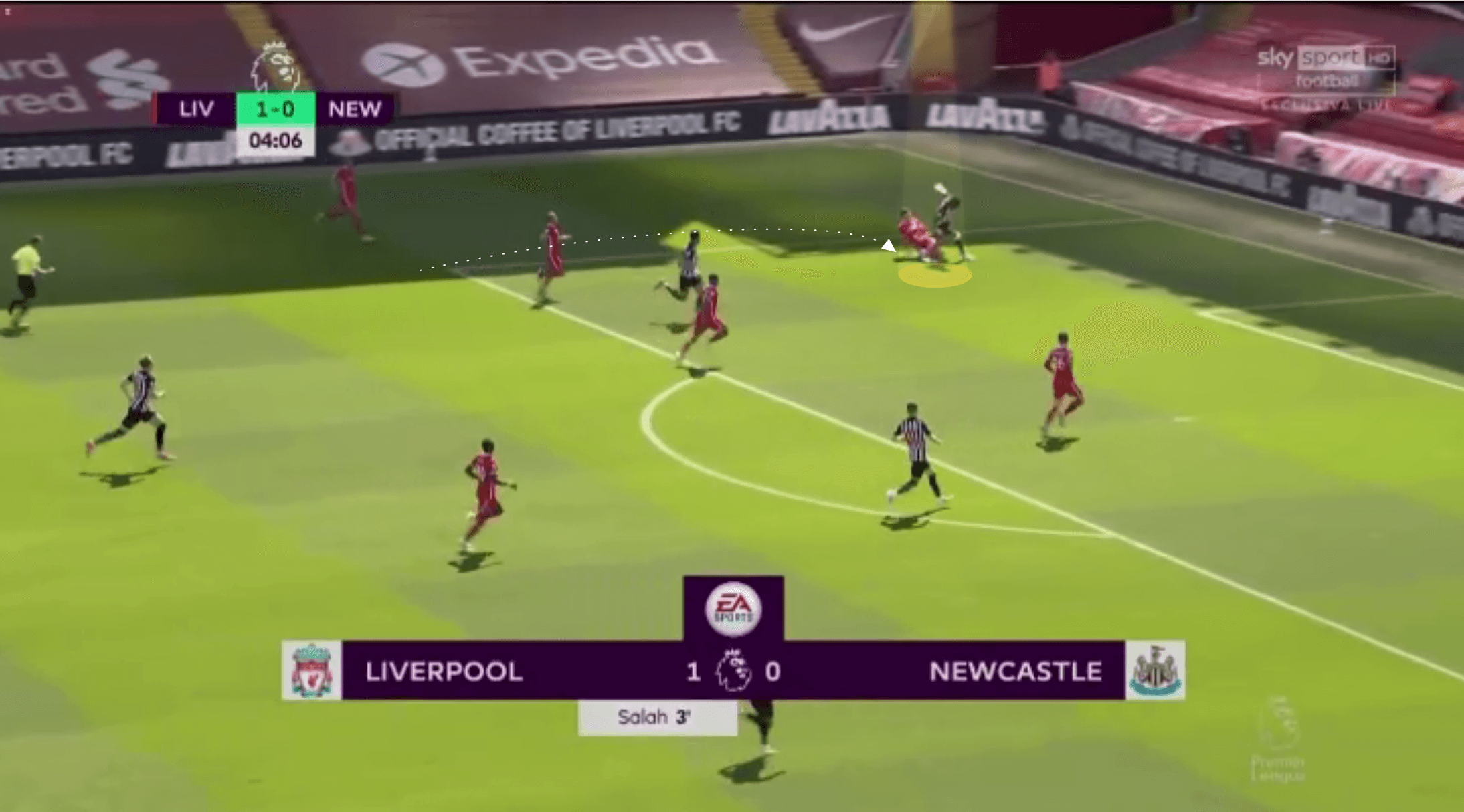
Kabak stands at 1.86m in height, which whilst it isn’t short by any means, it certainly isn’t tall for a centre-back. As such Kabak can provide a useful foil to a more aerially dominant centre-back (and if his own aerial numbers are anything to go by this might be useful). He is naturally inclined to dropping off of his defensive teammates and providing cover and displays a decent top speed when sprinting in a straight line. He is less impressive when turning to sprint and as such he will move early to cover the ball in behind. For the most part, he performs this well but can go too early and isolate himself against the forward in a 1v1 foot race, too far from his defensive teammates where they can return the favour and suitably cover him too.
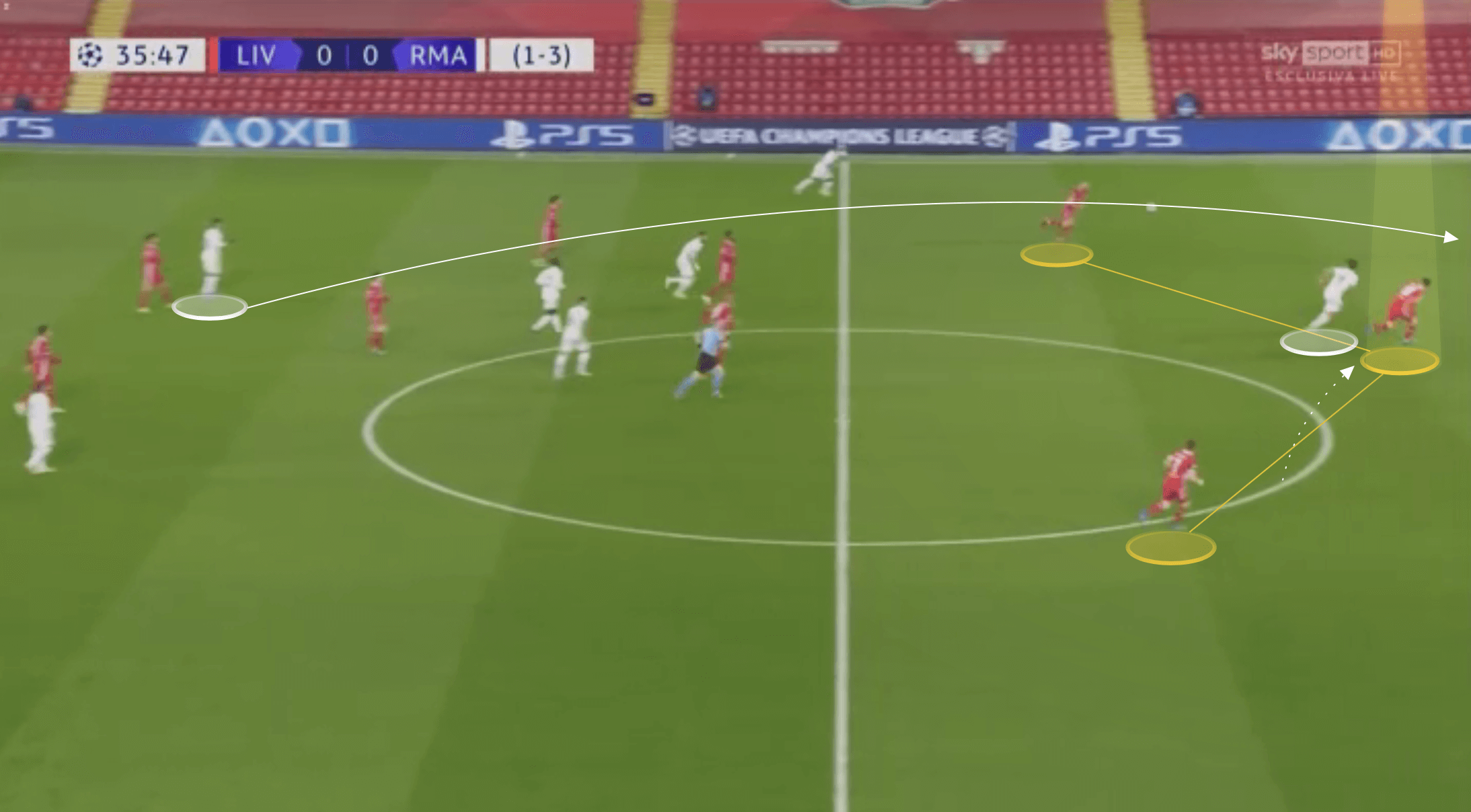
Kabak’s awareness as he drops back is excellent. At an initial glance, it can look like he strays too far from his centre-back teammate, but frankly, it is often the other way round, where his teammate is the one straying too far. Kabak doesn’t allow himself to be pulled over for the sake of compactness, instead assessing the threat from behind him as he tracks back. In the next two images, we can see this in action as Fabinho shifts across the pitch, but Kabak remains central. We can see in this image below how Kabak is looking behind as the opposition have the ball out wide, ensuring Andy Robertson isn’t left in a 2v1, despite the presence of a Leeds attacker between Kabak and Fabinho.
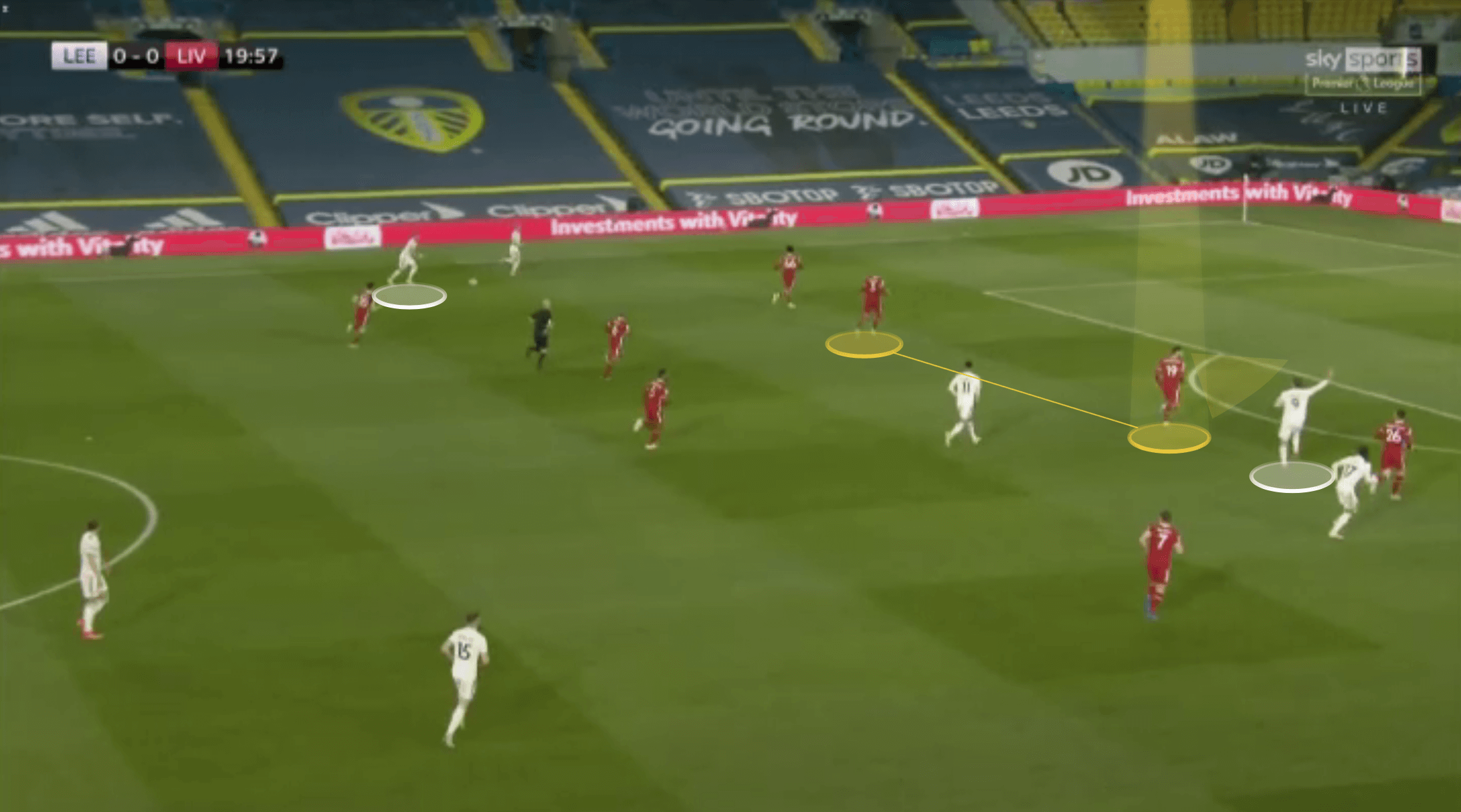
Kabak adjusts his positioning by looping slightly away from Fabinho whilst still facing forward. In doing so he is able to cut out the run of the forward-positioned behind him whilst still covering the threat of the second Leeds attacker further inside.
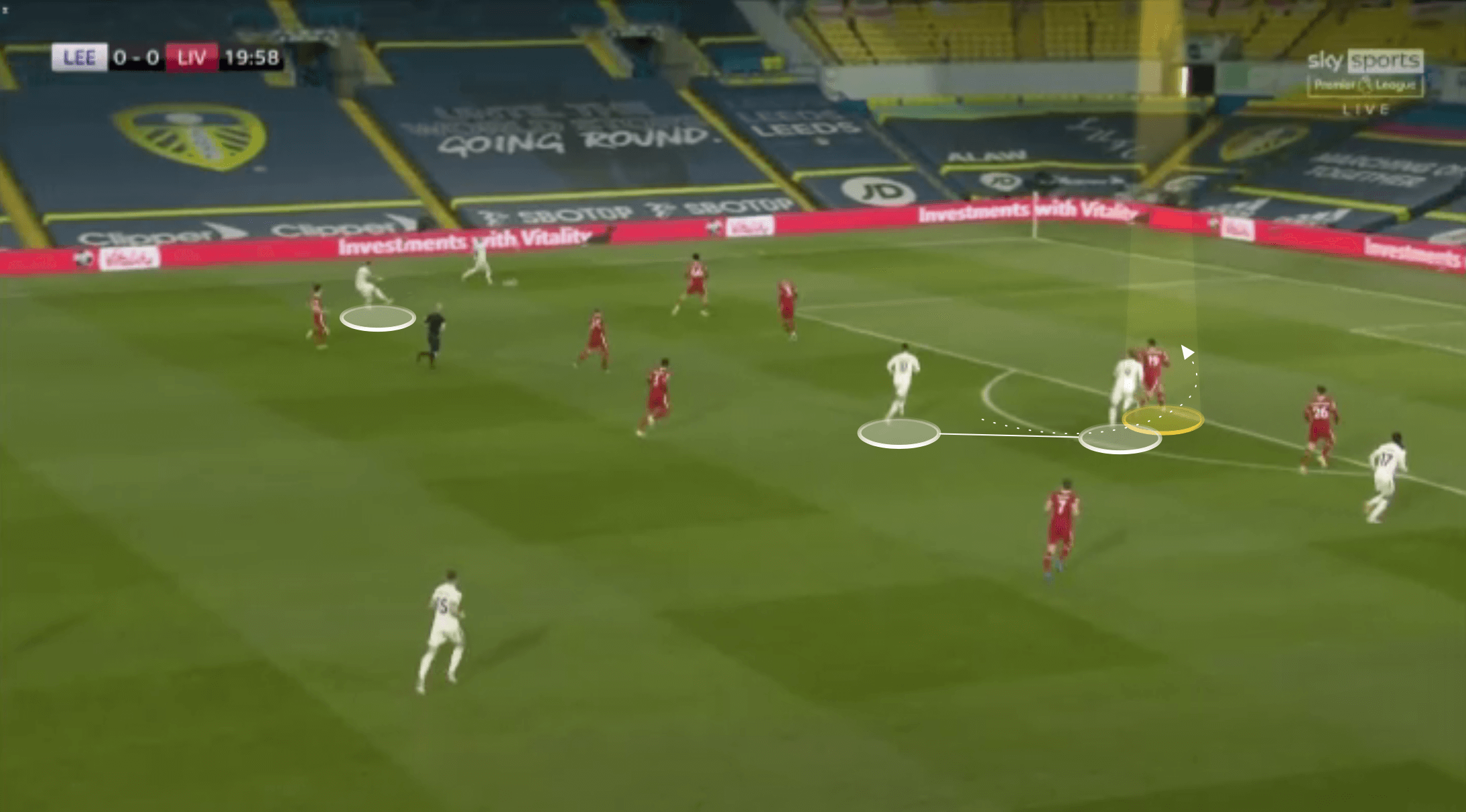
Potential frailties
Kabak does have some tendencies within his game that need developing and teams may look to exploit.
Firstly, whilst he is proactive in covering his defensive teammates, he can be too eager at times to do this, and may shift well across the pitch to cover his closest full-back. Whilst he can successfully cover them, he can cut right across them, forgiving a strong central position to do this, and there are occasions where the full-back would be able to recover without Kabak intervening. Of course, if Kabak comes away with the ball when he does this, then it isn’t a problem, but there are times where he does. Where he is strong in defending when the ball-carrier is driving towards goal, Kabak shows less skill and patience when they have their back to goal. He can lunge in clumsily at times, allowing himself to be turned and rounded, and if he is out of position, like in the image below, this is less than ideal.
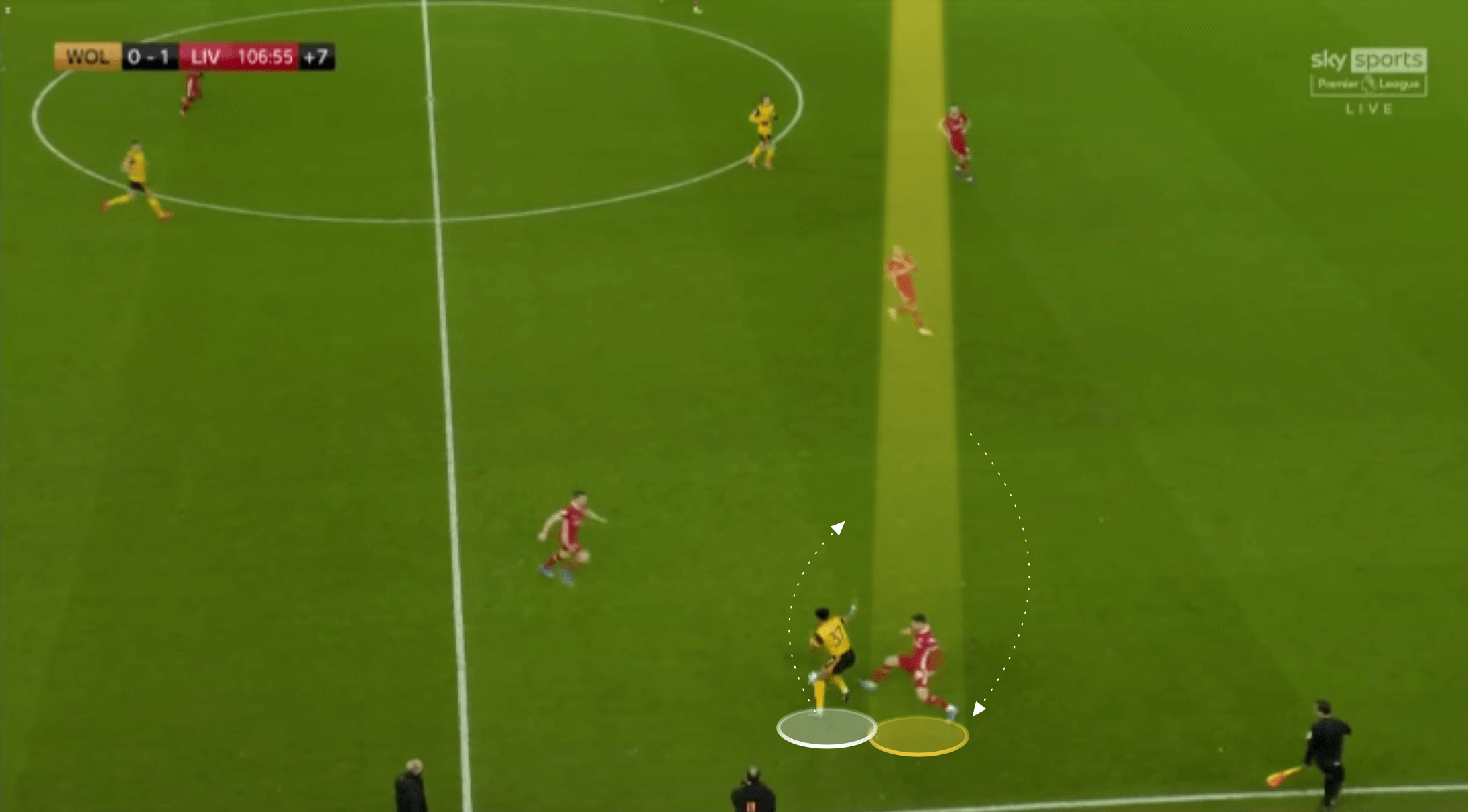
Kabak will step forward to engage an onrushing attacker quickly and with aggression but can allow himself to get caught flat, which we can see in the image below. Again if he manages to make the tackle or interception then this will go unnoticed, but on the occasions where he is easily played past as he does this, it becomes more of a problem. There were occasions where Kabak realised his body position was incorrect in some duels last season, and he lashed out to bring the ball carrier down and give a foul instead of allowing himself to be beaten.
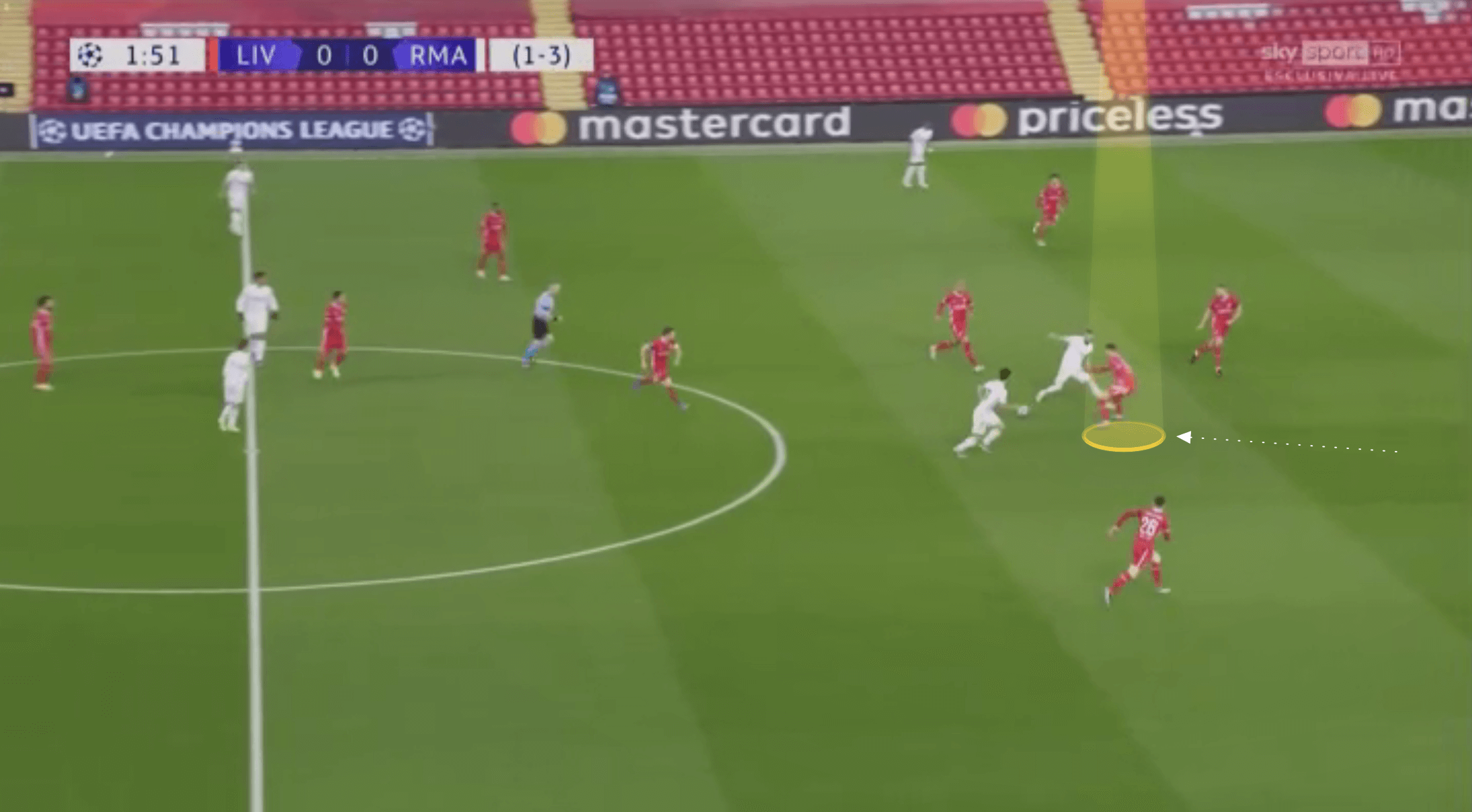
Kabak’s biggest issue is his overall positioning when the opposition are looking to play a through pass to a forward playing on his shoulder. He can too frequently be facing in the opposite direction of the intended pass or run, which forces him to turn 180 degrees before sprinting to recover in an attempt to thwart a shot on goal from the forward making the run. An example of this is seen in the image below, where whilst he has good compactness with his centre-back teammate, he is nevertheless facing outwards with a direct passing line through the middle of the pitch.
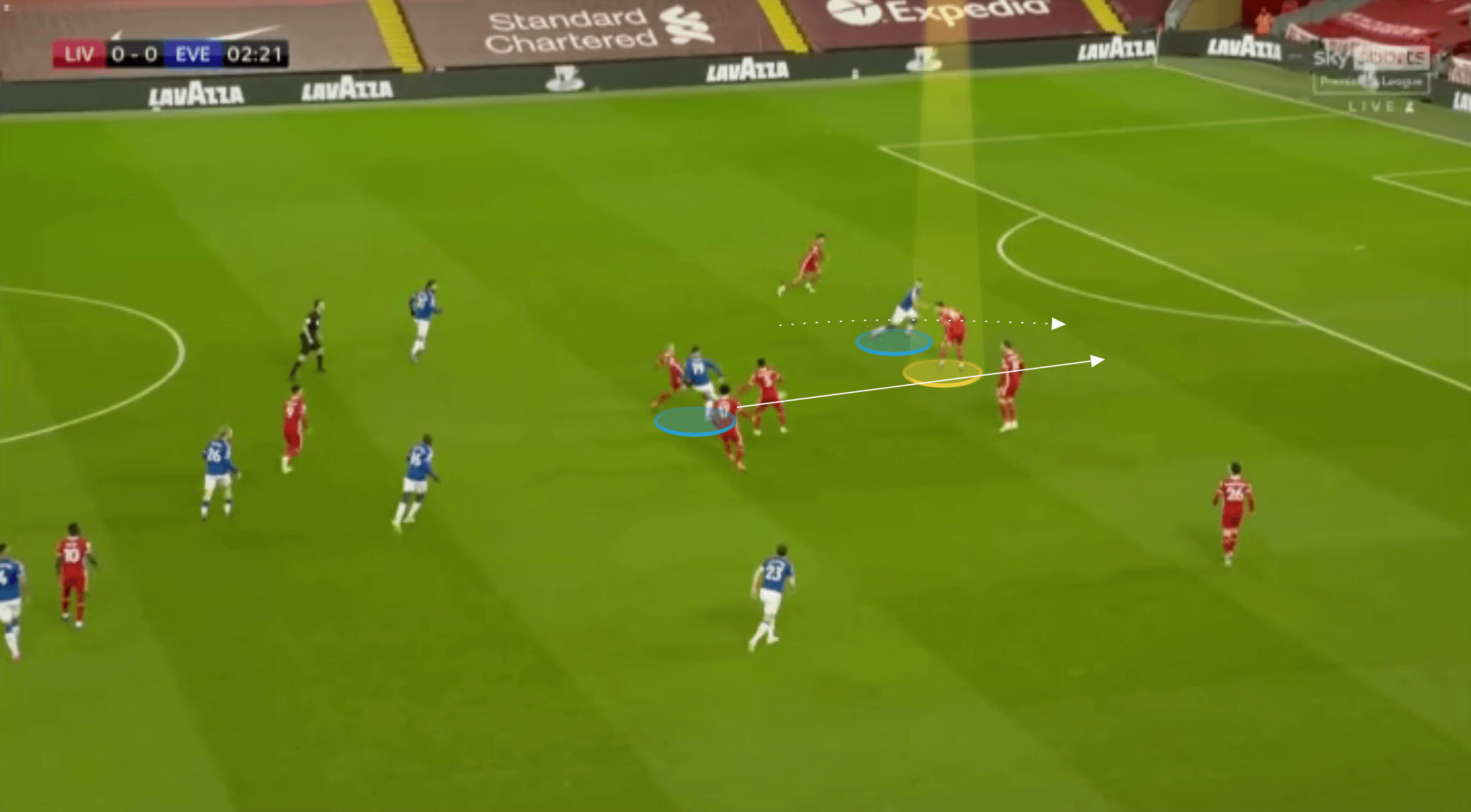
On the flip side, he looks to show inside in the example shown below, but the pass is played to his outside. Whilst this is certainly less of an issue than the previous example, Kabak needs to develop an understanding of his positioning across the width of the pitch. Below, if he wanted to show the pass into the area he was facing, giving him a greater chance of making an interception or catching the forward, then a slightly wider position would have benefited him. Whereas in the previous image, he either needed to get more narrow, preventing the straight pass or again go wider and face inside, where he could catch the forward more easily.
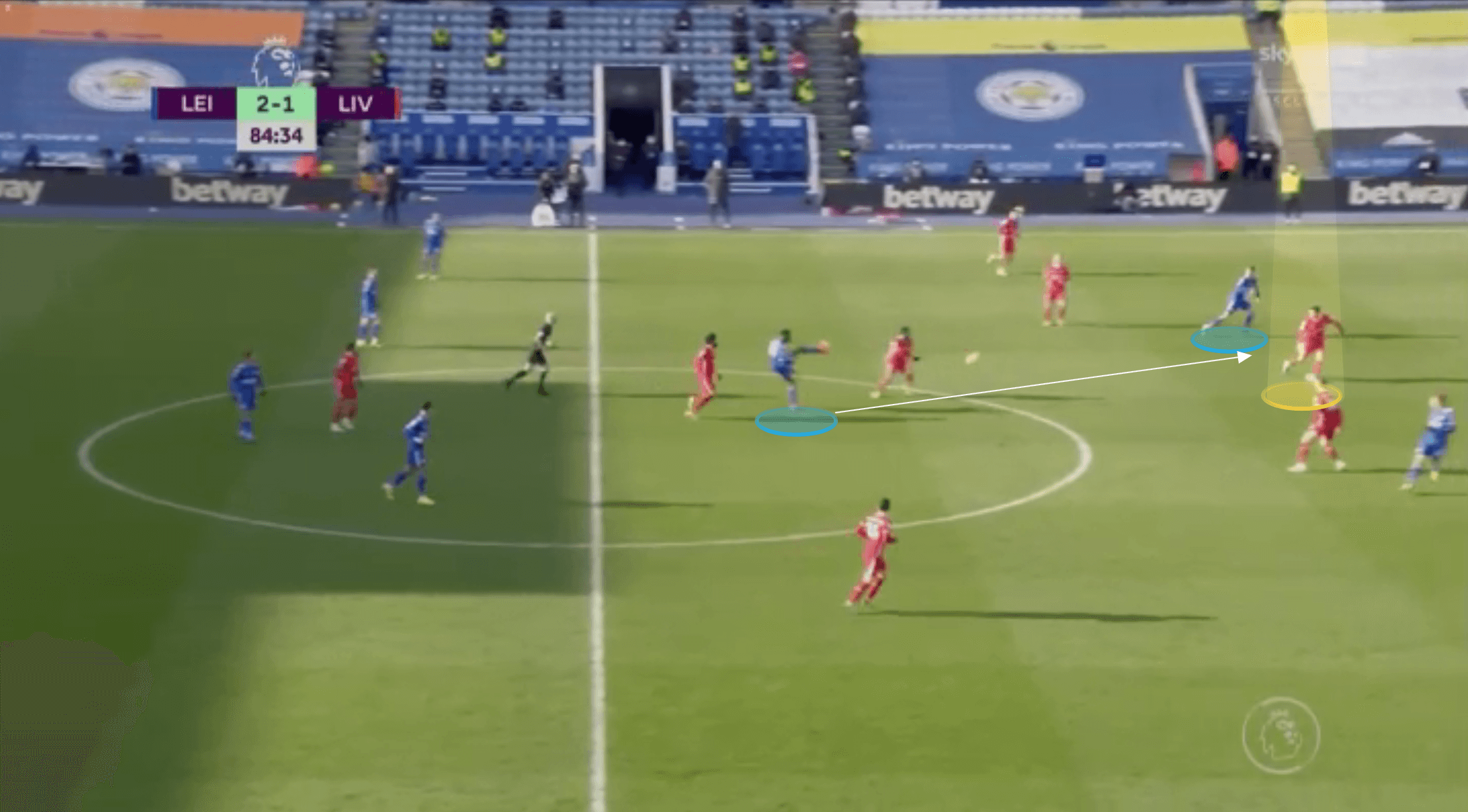
Conclusion
Regardless of any potential frailties in his game, and his data not standing out against that of the other centre-backs in the Premier League, Kabak is still an excellent signing for Norwich who will undoubtedly improve their defence. In possession, he is going to provide them with a perfectly able ball-player, whose longer passing range will certainly help them catch sides on quick breaks upon turnover of possession. Defensively he will always work best alongside a more dominant centre-back but performs admirably with ground duels and his overall positioning is decent for the most part. He has enough pace to cover passes played in behind, and with an adjustment in some of his body positioning in dealing with central through passes, and he will grow even more in this aspect of his game.




Comments